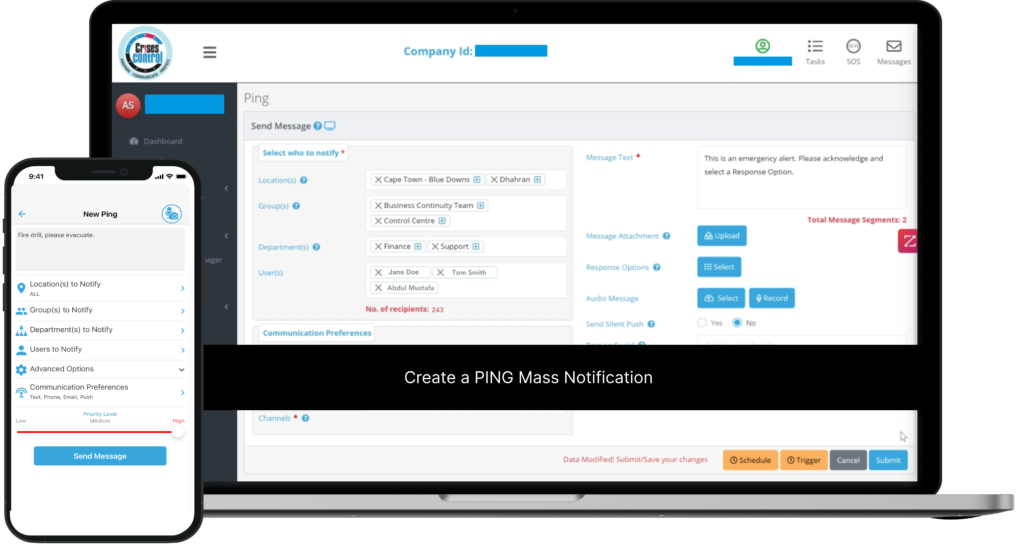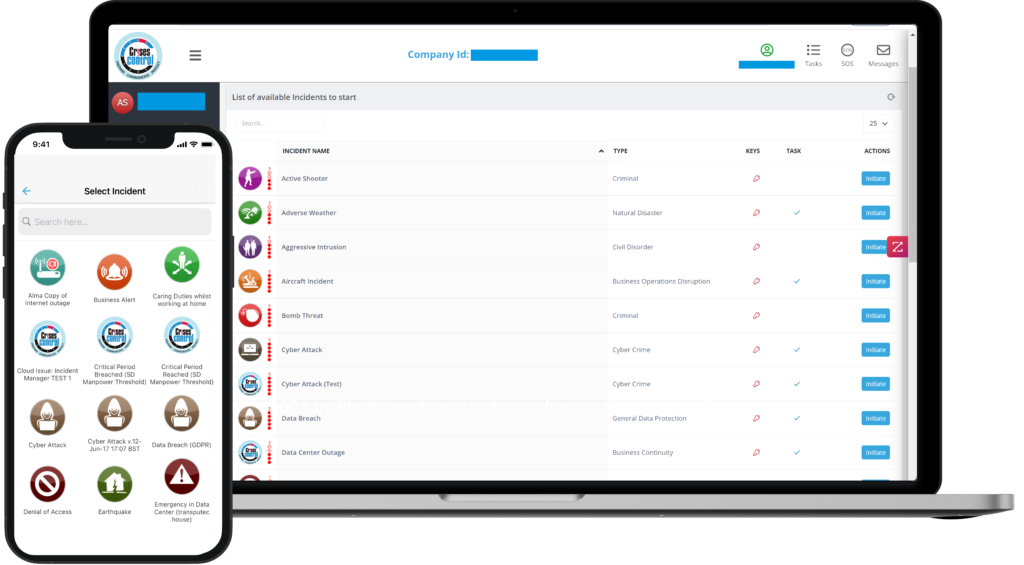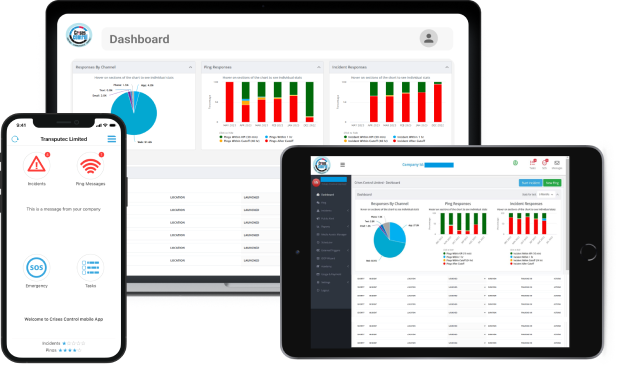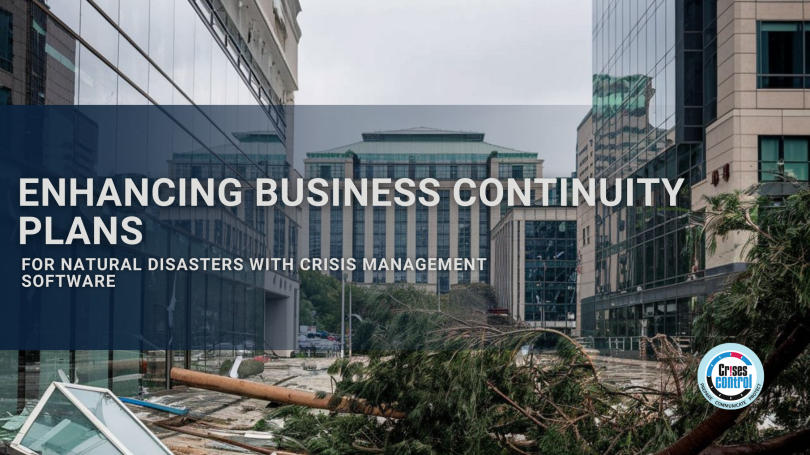Written by Ikram Tassi | Marketing
Natural disasters pose an ever-present threat to businesses worldwide. Whether it’s floods, wildfires, or storms, these unpredictable events can lead to operational downtime, financial losses, and even threats to employee safety. For organisations, the challenge isn’t just about responding to such crises but being prepared to minimise their impact before they occur.
Unfortunately, many businesses still rely on outdated business continuity plans, which often fail to address the complex, real-time demands of modern natural disasters. To remain resilient, businesses need dynamic solutions—tools that enable swift responses, safeguard operations, and ensure employee safety. This is where a business continuity platform, like Crises Control, can play a vital role.
In this blog, we will explore the shortcomings of static continuity plans, how crisis management software can bridge these gaps, and why adopting technology is a necessity for effective natural disaster preparedness.
Why Natural Disasters Require More Than Traditional Continuity Plans
Natural disasters present unique challenges that conventional business continuity plans often fail to address. Some of the critical issues include:
- Unpredictable Timing: While certain disasters, such as hurricanes, provide advance warnings, others, like earthquakes or flash floods, occur without notice, leaving little time for action.
- Communication Failures: Natural disasters can disrupt traditional communication channels, making it difficult to disseminate vital information to employees, customers, or stakeholders in a timely manner.
- Employee Safety Risks: Accounting for employee whereabouts and ensuring their safety during widespread disruptions can be an overwhelming task without adequate systems in place.
- Operational Disruptions: Infrastructure damage, supply chain interruptions, and power outages can halt operations, erode customer trust, and lead to revenue losses.
Static plans that sit in a binder are often insufficient in dealing with these fast-moving, multifaceted crises. Organisations need solutions that are flexible, technology-driven, and capable of evolving in real time.
What Is Crisis Management Software?
Crisis management software enhances traditional business continuity planning by offering tools to monitor, manage, and respond to emergencies effectively.
This software acts as a central hub, enabling real-time communication, incident management, and operational recovery during crises. With features like multi-channel notifications, task management, and post-incident analysis, crisis management software equips organisations to tackle natural disasters proactively and minimise their impact.
Key Benefits of Crisis Management Software in Business Continuity Planning
1. Enhanced Communication and Real-Time Alerts
Clear communication is paramount during natural disasters, yet traditional methods often fall short in ensuring timely and accurate information reaches all stakeholders. Crisis management software addresses this challenge by providing:
- Multi-Channel Notifications: Alerts are sent simultaneously via SMS, email, voice calls, and app notifications, ensuring all employees receive critical information regardless of location or communication preferences.
- Geo-Targeting Features: Notifications can be sent to specific geographic areas, ensuring only relevant personnel receive updates, reducing unnecessary disruption for others.
- Pre-Scheduled Alerts: Businesses can automate alerts for recurring risks, such as severe weather, ensuring preparedness in advance.
This seamless communication capability ensures that everyone, from employees to external partners, is informed and aligned during a crisis.
2. Streamlined Incident Management
Managing incidents during a natural disaster can be overwhelming without the right tools. Crisis management software simplifies this process with:
- Centralised Dashboards: Managers can view real-time updates on incidents, monitor task progress, and coordinate responses from one platform.
- Task Delegation and Tracking: Assign roles and responsibilities to specific team members to ensure swift and organised action.
- Automated Workflows: Standardised procedures can be activated instantly, enabling quicker decision-making and execution.
- Post-Incident Reporting: Detailed analytics and reports help organisations review their response, identify weaknesses, and improve future business continuity plans.
This structured approach ensures that responses are cohesive, effective, and well-documented, minimising the chaos typically associated with natural disasters.
3. Prioritising Employee Safety
The safety of employees should always be a priority during a natural disaster. Crisis management software provides tools to keep your workforce safe and accounted for:
- Two-Way Communication: Employees can report their status or request assistance, ensuring real-time updates on their wellbeing.
- Check-In Tools: Roll-call functionality allows managers to confirm the safety of their staff quickly and accurately.
- Location Services: GPS integration helps organisations locate employees in affected areas, ensuring resources are allocated where they are most needed.
By prioritising employee safety, organisations can build trust and confidence among their workforce, fostering a culture of resilience and preparedness.
4. Safeguarding Data and Ensuring Operational Continuity
Natural disasters can compromise both physical infrastructure and critical data. Crisis management software ensures that organisations remain operational and secure by:
- Cloud-Based Storage: Essential files and documents are securely backed up, preventing data loss during disasters.
- Remote Accessibility: Teams can access critical systems and information remotely, ensuring business continuity even if offices are inaccessible.
- Data Recovery Tools: Quick restoration of lost or damaged data minimises downtime and allows operations to resume faster.
By integrating these capabilities, businesses can ensure minimal disruption and maintain customer trust, even during challenging circumstances.
Interested in our Ping Mass Notification System?
Efficiently alert everyone in seconds at scale with our Mass Notification System – PING, get the message out fast and ensure rapid response and recovery.

How Crises Control Can Enhance Your Business Continuity Plan
Crises Control is a leading business continuity platform, purpose-built to help organisations prepare for and respond to natural disasters. Here’s how it supports resilience:
1. Customised Alerting Systems
Crises Control enables organisations to tailor alerts for specific risks and scenarios. Its multi-channel delivery and geo-targeting capabilities ensure timely, relevant communication, keeping teams informed and ready to act.
2. Centralised Incident Management Tools
The platform’s intuitive dashboard and automated workflows allow organisations to manage incidents efficiently. Task delegation, real-time updates, and collaborative tools ensure responses are coordinated and effective.
3. Comprehensive Employee Safety Features
From roll-call functionality to GPS tracking, Crises Control prioritises employee wellbeing. Its two-way communication features ensure staff can report their status, allowing organisations to respond to their needs promptly.
4. Scalable Solutions for Every Business
Whether you’re a small business or a multinational corporation, Crises Control’s adaptable features make it suitable for businesses of all sizes and sectors. Its flexibility ensures that every organisation can address its unique challenges effectively.

Interested in our Incident Management Software?
Customise your Crisis Incident Management Software to meet your specific needs with our flexible tools & stay connected and informed during the crisis and incident management process
The Business Benefits of Crisis Management Software
Adopting crisis management software offers significant advantages for businesses, including:
- Improved Safety: Protecting employees and assets during crises ensures long-term organisational resilience.
- Minimised Downtime: Maintaining operations during and after disasters reduces financial losses and safeguards customer trust.
- Greater Confidence: Employees and stakeholders can trust that the organisation is prepared to handle emergencies effectively.
- Regulatory Compliance: Meeting industry standards for disaster preparedness protects organisations from legal and reputational risks.
By investing in technology-driven solutions, organisations position themselves to navigate even the most challenging crises with confidence and efficiency.
Take the First Step Towards Resilience
Natural disasters are inevitable, but the disruption they cause doesn’t have to be. With Crises Control as your business continuity platform, you can strengthen your preparedness, ensure the safety of your workforce, and maintain operations during crises.
Don’t wait for the next disaster to expose vulnerabilities in your continuity plan. Contact us now to schedule your free demo and discover how Crises Control can revolutionise your approach to natural disaster preparedness and business resilience.
Request a FREE Demo









